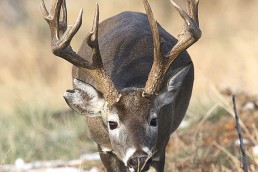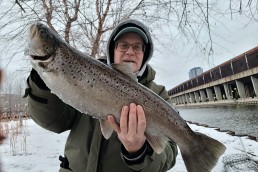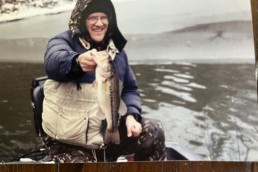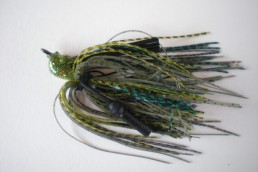Serene Settings: Lack of Pressure is Key to Getting Close to Mature Bucks
SHARE THIS POST
Many land managers implement food plot programs and timber stand improvements. They also practice sound herd management and have everything whitetails could ever need. They put in their time hunting countless hours in pursuit of a “home-grown” trophy, yet still find it difficult to harvest mature bucks.
Since they can’t seem to connect, their minds ponder copious reasons why.
Unwittingly, these hunters are often the cause of their own demise. A mature buck will not tolerate much of an intrusion before it changes something to avoid making contact with you. These animals often figure out your movements and habits before you ever see them. Most hunters also tend to go hunting whenever they have an opportunity, whether circumstances are in their favor or not. But you can’t just divulge your intent and blow the deal before you have an opportunity.
Why let them know you’re coming?
Extraordinary anxiety
“I got the day off work—I’m heading to the treestand!”
So many hunters never even consider if the wind direction and currents are in their favor, if they can approach their ambush location without being busted and many other details that ultimately factor into success. Again, they hunt because they have the opportunity to hunt. The problem is the target buck—or other deer for that matter—will often “pattern” the hunter before he ever sees the animal. It’s best to only hunt when the conditions are in your favor, or at least wait until the majority of the details back your potential for success. Not all the circumstances may be favorable, but you must at least make sure the wind currents are supporting your ambush location and approach.
I know how you feel; we only get so many days to hunt each season so we want to make the most of it. However, by making mistakes and hunting when the list of details gives the advantage to the animals, we teach our quarry how to avoid us. Rather than just “going hunting” because I have the time off of work or don’t have any family duties, if the conditions aren’t right, I can then use that time to practice shooting, set up another ambush location somewhere else, scout a new location, deal with my camera traps, prepare other equipment, seek another food plot or agricultural field, search for new properties to hunt or other tasks that are part of the preparation.
Getting there is half the battle
Often, your scheme is blown before you ever reach your stand. Getting there undetected is just as important as hunting during the right conditions. There are numerous deceptions we can use to help us make it to our sites undetected. From preparing silent-approach trails or planting screening cover to mixing up our access routes or having a buddy drive you to and from a site, we are making sure the animals don’t know they’re being hunted.
Are you enjoying this post?
You can be among the first to get the latest info on where to go, what to use and how to use it!
I prepare silent approaches to my ambush locations before the season by snipping branches and raking leaves and other debris off the trail. I’ll even cut a path through tall grass with a weed whacker. Ideally, you should be able to access your treestand and have deer bedded within 100 yards that haven’t noticed you.
A great tactic I’m doing more of these days is planting screening cover to hide my approach. Strips of corn, millet or some sorghum will work, but BioLogic’s Blind Spot is perfect. The Egyptian wheat in this blend can grow 12 to 14 feet high. It will grow a thick stand that even with only a 10-foot-wide strip it is difficult to impossible to see through. This tactic works for screening open spots you cross, for stand sites or ground blind locations, parking areas or locations you want secluded.
When you enter your hunting area, do you drive into the property the same way every time? I learned many years ago while hunting on Manitoba farmland with its “section roads,” that bucks can simply see you coming and your hunt is blown before you ever get out of your vehicle. I’ve watched bucks from my treestand do this with other hunters: “Here comes Billy-Bob on his way to his treestand again.” So, they skedaddle out of the area or stay bedded until after dark to sidestep the contact. In the Manitoba scenario, the section roads were the only way to access the property via land, so once I figured this out I used a small jon boat and trolling motor to travel up the nearby Red River. I could then come in from the backside of the property—I believe two whopper bucks were the result of employing this tactic.
Using the buddy system is another way to fool your herd on an approach. Whitetails become accustomed to farm vehicles and ATVs. In fact, I’m sure most of you have driven by a bedded whitetail and watched them hunker down, and stay hidden. Try going by them on foot and see if they stay bedded; they’ll be onto the neighbor’s property before they even begin to slow down. A vehicle is much less intrusive than a human on foot. With this scheme you simply have a partner drive you to your treestand and drop you off. The deer believe the danger is gone with the noisy vehicle having left. This system can be especially effective when hunting a food plot, agricultural field or bait site where deer will likely be present. The last thing you want to do is identify your ambush location as a spot associated with man-made sounds of “humans” and “danger.”
A safe haven
If you wish to “house” mature bucks in your area you must give them a spot where they are left alone. If during the season you’re making scouting trips through the parcel to find a new rub on a tree you didn’t find on your last scout trip three days ago, sorry, but you will not hold mature bucks in that particular location. Giving them a secure sanctuary is important, not only if you wish mature bucks to reside in that area, but also if you want the herd to move freely and willingly during daylight hours. Pressure will only condition your herd into moving more during the night, and before and after legal hunting time. Premature contact with humans will force them into doing something different to steer clear, and can cause them to completely change established secure areas (bedding areas). Whitetails, especially mature bucks, know when they’re being hunted. They will probably still be somewhere within the region they’ve claimed as their “home range,” but they will search out better spots where they can be left alone and then they will be more difficult to hunt.
Pressure on purpose
With all the aforementioned information preaching the positive for not pressuring your whitetails or your hunting area, sometimes you may need to use force to get a mature buck up and moving during legal hunting hours. I would much rather hunt a buck that is undisturbed and moving about naturally within his home, but sometimes pressure is necessary to get an opportunity for a shot. As a “last hurrah” in a situation where they have been pressured too much and aren’t moving at all during the day or in areas that are difficult to hunt from a traditional treestand or ground blind, a little streamlined pressure can be just the ticket.
Pressured whitetails are difficult to hunt unless that pressure is targeted, and on purpose. Again, don’t hunt when the conditions aren’t in your favor, and give them a spot where they can live undisturbed. Animals free from anxiety are much easier to hunt than ones that know they’re being pursued. Be sneaky, cover your approach and ambush your buck while he’s undisturbed going about his daily routine. Lack of pressure is a key in consistently killing mature bucks.
MWO
SHARE THIS POST
Did you enjoy this post?
You can be among the first to get the latest info on where to go, what to use and how to use it!
Todd Amenrud
Todd Amenrud is a full time sportsman whose passion is bowhunting whitetails. He spends considerable time researching whitetails, and has written six books on the subject. Harvesting 47 record-book animals and his ability to share his knowledge have made him one of the Midwest’s most-recognized hunting resources.




